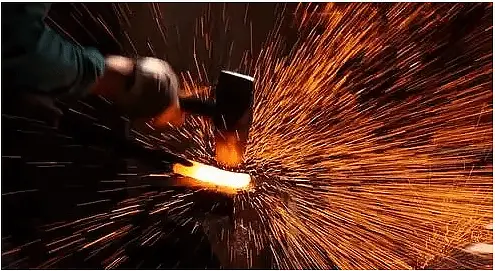What is residual voltage?
Let's start with a formal definition of residual stress:
Residual stress refers to the impact and influence of various factors in the manufacturing process. When these factors are removed and the component fails to completely lose the effects and influences, the remaining impact and influence is known as residual stress.
Still a little confused? Let's simplify.
For example, consider a person who was once thin and bought size L jeans. After a year, the person becomes overweight. When they wear jeans again, they will feel that the pants are too tight because they have gained weight, but the jeans have not changed.
At this point, there is a strong force between the body and the pants, and if the force is too strong, it is easy to tear the pants. This destructive force is an example of residual stress.
From an energetic point of view, when an external force causes the object to undergo plastic deformation, it creates internal deformation, which accumulates some energy. When the external force is removed, energy with uneven internal stress distribution is released.
If the object is not very brittle, it will deform slowly, but if the brittleness is high, cracks will form.
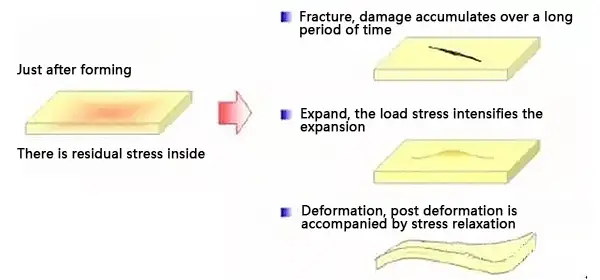
Fig. 1 Effect of residual stress
Residual stress is a prevalent problem in mechanical manufacturing and occurs in almost all processes.
However, the root causes of residual stress can be classified into three main categories:
- Non-uniform plastic deformation
- Uneven temperature changes
- Inhomogeneous phase transitions.
Residual voltage damage
From the categorization of residual stress, it is evident that it can cause slow deformation and change the size of the object. This can result in unqualified sizing of machined parts, loss of precision in the instrument, and cracking or even breakage in castings or forgings.
Furthermore, residual stress has a significant impact on the fatigue strength, stress corrosion resistance, dimensional stability and service life of the object.
During the cooling process, residual thermal stress may be generated due to uneven cooling caused by inadequate processes, leading to fractures of the casting.

Fig. 2 Fracture of the casting during cooling
During the heat treatment quenching process, the material is subject to fracture due to the martensitic transformation of the subcooled austenite.
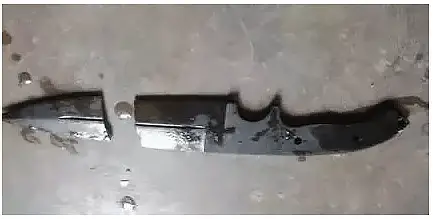
Fig. 3 Metal fracture during quenching
Residual voltage measurement
Residual stress measurement methods can be classified into three categories: mechanical, chemical and X-ray methods.
M mechanical method
The most commonly used mechanical method is the drilling method, also known as the blind hole method.
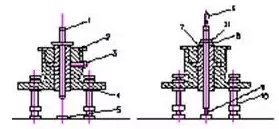
Fig. 4 Schematic diagram of the drilling method
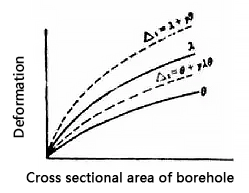
Figure 5 drilling method
During the drilling method, a section of a bar or tube three times its diameter is cut from the object. A through hole is drilled in the center and then a thin layer of metal is removed from the interior using a rod or drill, each removal being about 5% of the cross-sectional area.
After removal, the length and diameter elongation of the sample is measured. A relationship curve between these values and the well section area is created, and the derivative of any point on the curve is calculated to determine the rate of change in elongation and well section. The residual stress value can then be obtained using the appropriate stress formula.
Chemical Method
The chemical method has two concepts.
One concept involves immersing the sample in a suitable solution and measuring the time from the start of corrosion to the appearance of cracks, then determining the residual stress based on this time. Solutions used may include mercury and mercury-containing salts for tin bronze and weak bases and nitrates for steel.
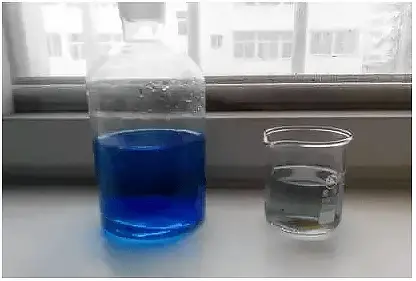
The second concept of the chemical method involves immersing the sample in a suitable solution and weighing it regularly. This process creates a weight reduction versus time curve, which can then be compared to a standard curve to determine residual stress. The higher the position of the curve, the greater the residual stress.
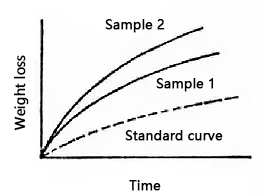
Fig. 7 chemical method weighing curve
X-ray method
The X-ray method involves using X-rays to penetrate metal parts, and the Laue method can qualitatively determine residual stress by analyzing changes in the shape of spots caused by X-ray interference.
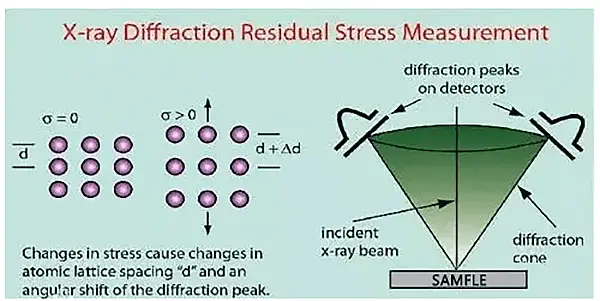
Figure 8 principle of the X-ray method
When there is no residual voltage, interference patterns appear as dots. On the other hand, the presence of residual voltage causes the interference patterns to elongate and resemble a “star” shape.
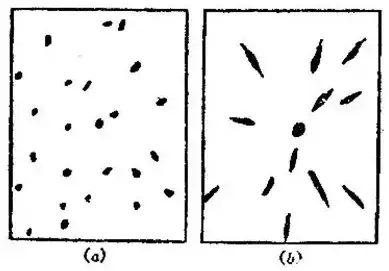
(a) No residual stress (b) residual stress exists
Fig. 9 Laue method measurement results
The Debye method is capable of quantifying the residual stress by analyzing the position, width and intensity of the diffraction lines in the Debye diagram.
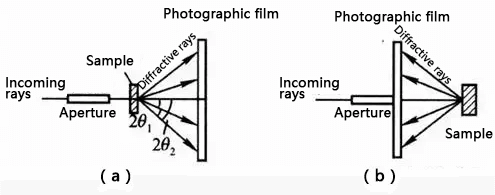
(a) transmission method (b) retro-reflection method
Fig. 10 Schematic diagram of the Debye method
Wrap it up
Mechanical and chemical methods are considered destructive testing methods as they require the collection of a local sample of the object being tested and result in irreversible damage. In contrast, the X-ray method is a non-destructive testing method that preserves the integrity of the object.
The mechanical method is particularly suitable for bar or tube-shaped objects and is able to accurately determine the size and distribution of residual stress. On the other hand, the chemical method, which is suitable for wire and plate-type objects, only provides a qualitative judgment and is difficult to make a quantitative determination.
Although the X-ray method is non-destructive, it is only applicable to materials that produce clear, sharp diffraction lines. Furthermore, its limited projection capability restricts its use to detect only residual stresses near the surface of the object.
Residual voltage elimination
Due to the potential dangers associated with residual voltage, it is crucial to have effective methods for eliminating it. There are four commonly used disposal methods: heat treatment, static charge pressurization, vibratory stress relief and mechanical treatment.
Heat treatment
Heat treatment is a method that uses the thermal relaxation effect of residual stress to reduce or eliminate it. This method typically involves the use of annealing or tempering processes.
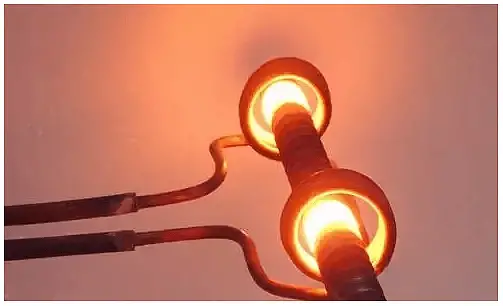
Fig. 11 heat treatment annealing treatment
Static charge pressurization
Static load pressurization involves modifying the residual stress in a part through plastic deformation, whether on a full or partial scale or even on a microscale.
For example, after welding, large pressure vessels can undergo “bulging,” a process in which they are pressurized from the inside, resulting in a small plastic deformation in the welding joint and a reduction in welding residual stress.
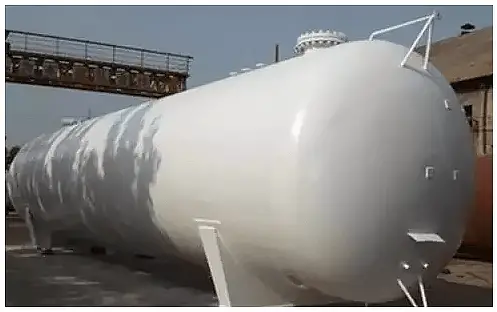
Fig. 12 large oil tank after bulging
V vibration strain relief
Vibration stress relief (VSR) is a commonly used method to eliminate internal residual stresses in engineering materials.
In this method, the workpiece is subjected to vibrations, and if the sum of the residual internal stress and the additional vibration stress exceeds the yield strength of the material, this leads to a small plastic deformation, thereby relaxing and reducing the internal stress in the material.
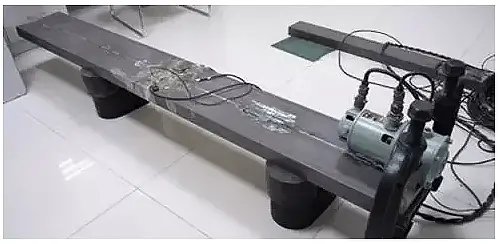
Fig. 13 Strain quantifiable VSR system
M mechanical treatment
Mechanical treatment involves reducing residual stress through small plastic deformations on the surface of an object. This can be achieved through methods such as collision of parts together, surface rolling, surface drawing, surface sizing, and fine pressing in a mold.
For example, ironing is an example of a process that effectively eliminates residual stress.
